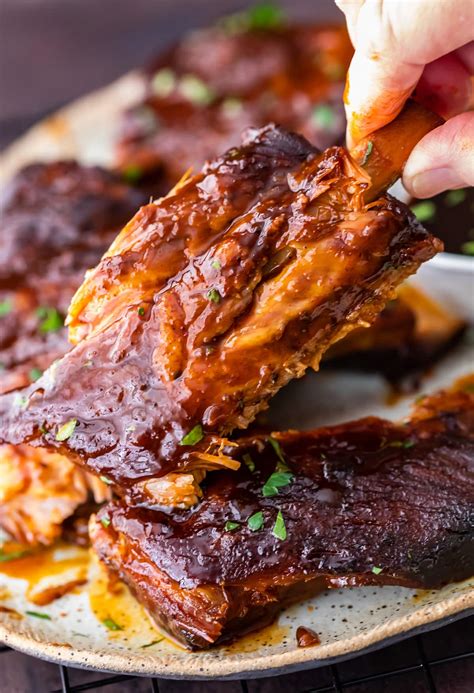How To Make Delicious Ribs: A Step-by-Step Guide
Making mouthwatering ribs at home might seem daunting, but with this comprehensive guide, you'll be barbecuing like a pro in no time. Whether you prefer fall-off-the-bone tender or slightly chewy ribs, this guide covers essential techniques and tips to achieve your perfect rack.
Choosing Your Ribs: Baby Backs vs. Spare Ribs
The first decision is crucial: baby back ribs or spare ribs? Both offer unique flavors and textures.
-
Baby Back Ribs: These ribs are smaller, meatier, and generally more tender, making them a popular choice for beginners. They cook faster than spare ribs.
-
Spare Ribs: These ribs are larger, have more fat and connective tissue, and offer a richer, more robust flavor. They require longer cooking times to achieve optimal tenderness.
Regardless of your choice, selecting a high-quality rack of ribs is essential for delicious results. Look for ribs with good marbling and a nice red color.
Preparing Your Ribs for BBQ Perfection
Before you fire up the grill, there's some prep work to do:
1. Removing the Membrane: The Key to Tender Ribs
The membrane (silverskin) on the back of the ribs is tough and prevents the ribs from becoming tender and absorbing flavor. Removing this membrane is crucial. Use a butter knife or your fingers to carefully peel it away. This seemingly small step makes a HUGE difference in the final product.
2. Seasoning Your Ribs: A Flavor Symphony
Generously apply your favorite rib rub. A simple rub might include:
- Salt: The foundation of any good rub.
- Black Pepper: Adds warmth and complexity.
- Paprika: Provides a smoky sweetness.
- Garlic Powder: Adds a savory punch.
- Onion Powder: Enhances the overall flavor profile.
Feel free to experiment with other spices like cayenne pepper for heat, brown sugar for sweetness, or even cumin or chili powder for a southwestern twist.
Cooking Methods: Grill, Oven, or Slow Cooker?
There are several ways to cook ribs, each with its own advantages:
1. Grilling Ribs: The Classic Approach
Grilling ribs offers a smoky flavor and beautiful char. Use indirect heat (away from the flames) to prevent burning. You’ll likely need to wrap your ribs in foil halfway through the cooking process to retain moisture and ensure tenderness.
2. Oven-Baked Ribs: Convenient and Consistent
Oven baking provides a more consistent cooking temperature, making it a great option for beginners. Similar to grilling, you might want to wrap your ribs in foil to prevent drying out.
3. Slow Cooker Ribs: Fall-Off-the-Bone Tenderness
The slow cooker is perfect for achieving melt-in-your-mouth tenderness. The low and slow cooking method breaks down the connective tissues, resulting in incredibly soft ribs.
Regardless of your chosen method, always use a meat thermometer to ensure the ribs reach an internal temperature of 190-203°F (88-95°C).
The Finishing Touch: Sauce It Up!
Once your ribs are cooked, you can apply your favorite barbecue sauce. Consider brushing it on during the last 30 minutes of cooking or after the ribs are cooked. This allows the sauce to caramelize and develop a delicious glaze.
Serving and Storage
Serve your ribs hot off the grill or out of the oven. They're delicious on their own or paired with classic barbecue sides like coleslaw, potato salad, or corn on the cob. Leftovers can be stored in the refrigerator for up to 3 days.
This guide provides a foundation for creating delicious ribs. Don't be afraid to experiment with different rubs, sauces, and cooking methods to find your perfect recipe. Happy barbecuing!
